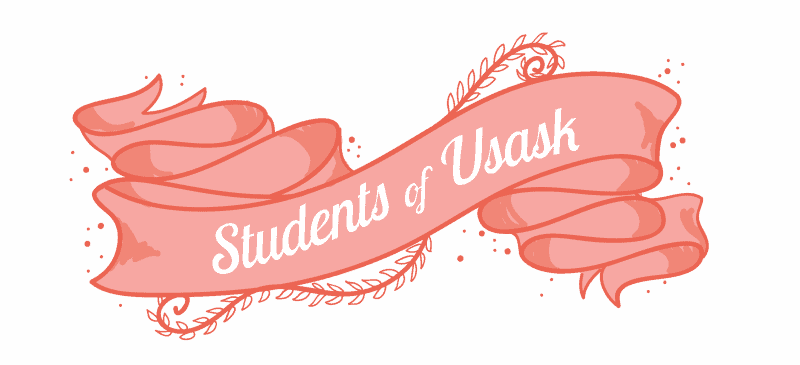
Canada, one of the most multicultural societies in the world, is made up of about 200 different nationalities — not including the 634 different Indigenous groups.
The University of Saskatchewan itself is home to many vibrant cultures, languages and traditions. To delve into some of the rich diversity we have here on campus — although we can only scratch the surface — the Sheaf discussed representation, culture and individuality with six Canadian students on campus.
Nykole King: Ukrainian-Canadian
St. Thomas More College, fifth-year international studies
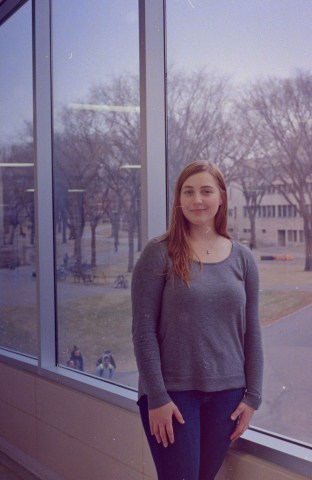
“I was born in Saskatoon… My great-grandparents were both immigrants from Ukraine. I was, very much so, raised by my grandparents. I think they talked to me in Ukrainian when I was a very young kid, so I’m sure I understood Ukrainian.
“Ukrainian culture kind of blended in with English culture sometimes, but there were some things that stuck out. I don’t know if it’s just my family, or all Ukrainian culture in general, but they were very much a ‘work your hands to the bone’ kind of people. That’s probably just a very immigrant thing to do. When I talk to other [Ukrainian] people, their parents were the same way — you work hard for every single thing you have.
“I spent a lot of time with my grandparents as a kid, and so I remember doing Ukrainian cultural things and traditions. After they passed away, I think I lost some of that… Getting into university was when I took the Ukrainian language courses here. That helped a lot — I gained back that language and learned a lot about my culture.”
Josie Conacher: Ghanian-Canadian
College of Arts and Science, second-year microbiology and immunology
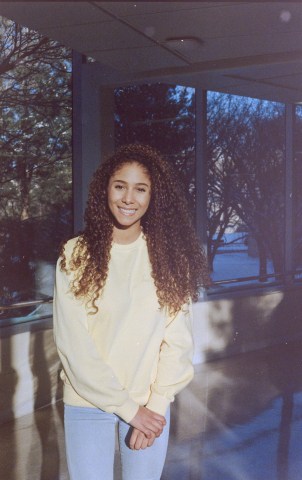
“I was born here — in North Battleford to be exact. My parents met in Ghana, which is where my mom is from. Then, they came here and got married. My dad is from [Saskatchewan] — Turtleford, exactly. He’s been in small towns his whole life. They moved to the tiniest town in Saskatchewan: Mervin, population 400, [now about 200].
“It was really tough for my mom, because it was such a big culture shock. For her, coming here, it was tough. It was rough for the longest time, because she didn’t know anyone… My mom decided that we should move to Saskatoon, so she could continue her studies.
“She had studied to be a teacher in Ghana, but often, in developing countries, once you come to Canada, the education doesn’t transfer over. My mom started her studies when we were kids, and my dad was working… There’s way more opportunities here than there would be in Ghana, especially education-wise. That was why they moved here… It was more like ‘How can they better themselves and have a better future?’”
Yol Piok: South Sudanese-Canadian
College of Arts and Science, third-year psychology
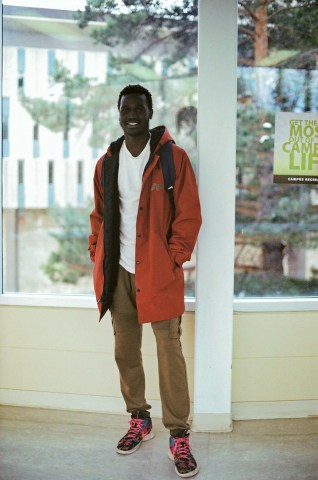
“We’re a pretty big, tight-knit family — nine people: seven boys and two girls. We’re all from South Sudan. That’s where we’re officially from. We moved here in 2000. My youngest brother wasn’t even born yet — he’s our family’s first-generation [Canadian].
“Both of my parents grew up [in South Sudan], and my dad used to be a financial advisor… It’s kind of funny how you can go from being a financial advisor in one city — a big job — to being a cab driver in Canada. It’s a big cultural difference.
“Whenever I go home, everything I eat is from our cultural background, and that’s how [my mother] keeps [our culture] there. She always talks in our native language with all her friends and my dad. They don’t necessarily push it upon us, but they would jokingly add snippets of what they would actually be doing back home.
“She still keeps it alive in us and lets us know we’re South Sudanese… We still do the traditional [Canadian] culture, but we add our own flare — switching it up and making it our own thing.”
Raluca Marincas: Romanian-Canadian
Edwards School of Business, second-year marketing
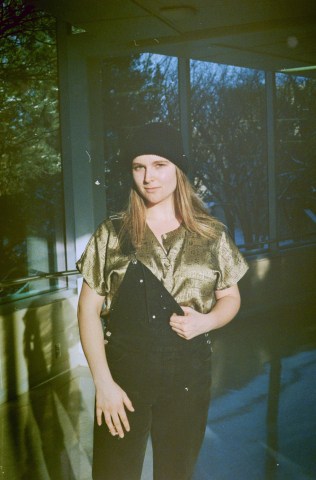
“My name is Raluca Mihaela Marincas. I’m from Romania — I was born there… We moved to Canada back in ’98 — I was just over a year old. It was very challenging there… The economy was very poor in Romania, and there was a lot of corruption within the political parties — it just wasn’t a safe place to be.
“I know the only reason my parents came to Canada was because of me and my sister. They were well off in Romania. My dad had a house attached to the church — he was priest of the orthodox community [there] and is in Saskatoon as well. Everything was fine for my parents. Moving to Canada was for our sake.
“In order for us to advance and be productive in the future, my parents came to Canada, the land of a different type of opportunity. You have more help and railings to get to the steps you need [to succeed]. Opportunity is easier here… But, I always felt like I had to choose between being either Romanian or Canadian instead of learning that I could be both, without having to let people define what was better for me.”
Regan Ratt-Misponas: Nēhiyaw and member of the Lac La Ronge Indian Band,
from Pinehouse Lake, SK
College of Arts and Science, third-year Indigenous studies
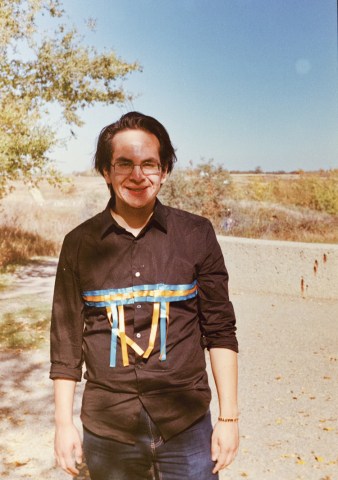
“The community that I come from is Pinehouse — that’s where I grew up. That’s where my feet had first touched the ground. That’s what I know best… I look at my family — I have a lot of first and second cousins that normally wouldn’t be very tight knit, but that’s the case within our family. We’re very tight knit, like brothers and sisters.
“Traditionally, that’s how many Cree families [were] as well… That’s something that I was taught here in university — from elders, being here in Saskatoon. I was never taught that at home. It was something that sort of happened — it was something that we lived and never really thought about.
“My dad always told me to never forget where I came from. That’s something I grew up with him telling me and always mentioning. He didn’t only mean from a community. He meant, ‘Don’t forget the stuff that you’ve been a part of in the past’ — the character you were raised with, the gifts that you were given. Don’t forget the people that you’ve been able to meet along the way and the journey that we’ve been given.”
Darian Lonechild: Nēhiyaw, from Wapi Maskwa, SK
College of Arts and Science, third-year Indigenous studies
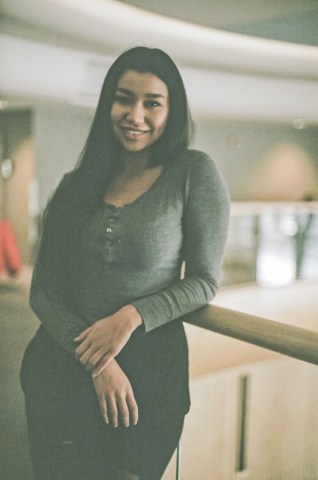
“My home is in southeast Saskatchewan, in a community called Wapi Maskwa — [or] White Bear — [in] Treaty 4 Territory. However, I have grown up in Saskatoon. There is absolutely Indigenous representation on campus, especially with the Gordon Oakes building and all of the activities that take place there. The Indigenous Students’ Council is in place to push [for] more representation on campus in decision-making … as well as events.
“How I represent my culture on campus is simply [by] being in attendance to my classes, as well as bringing my own personal experiences and knowledge as an Indigenous woman to class discussions. The representation of my culture is easily recognizable through my skin colour and long hair, on the exterior, and it represents my Cree and Saulteaux blood.
“I don’t think I need to go beyond that to represent my culture, because it is not entertainment for other people. I do acknowledge that, not long ago, Indigenous peoples had been punished for representing [their] culture. Indigenous students are representations of the resilience and love that is deeply embedded within their culture. I am proud to represent that.”
—
Photos and text: Victoria Becker / Outreach Director